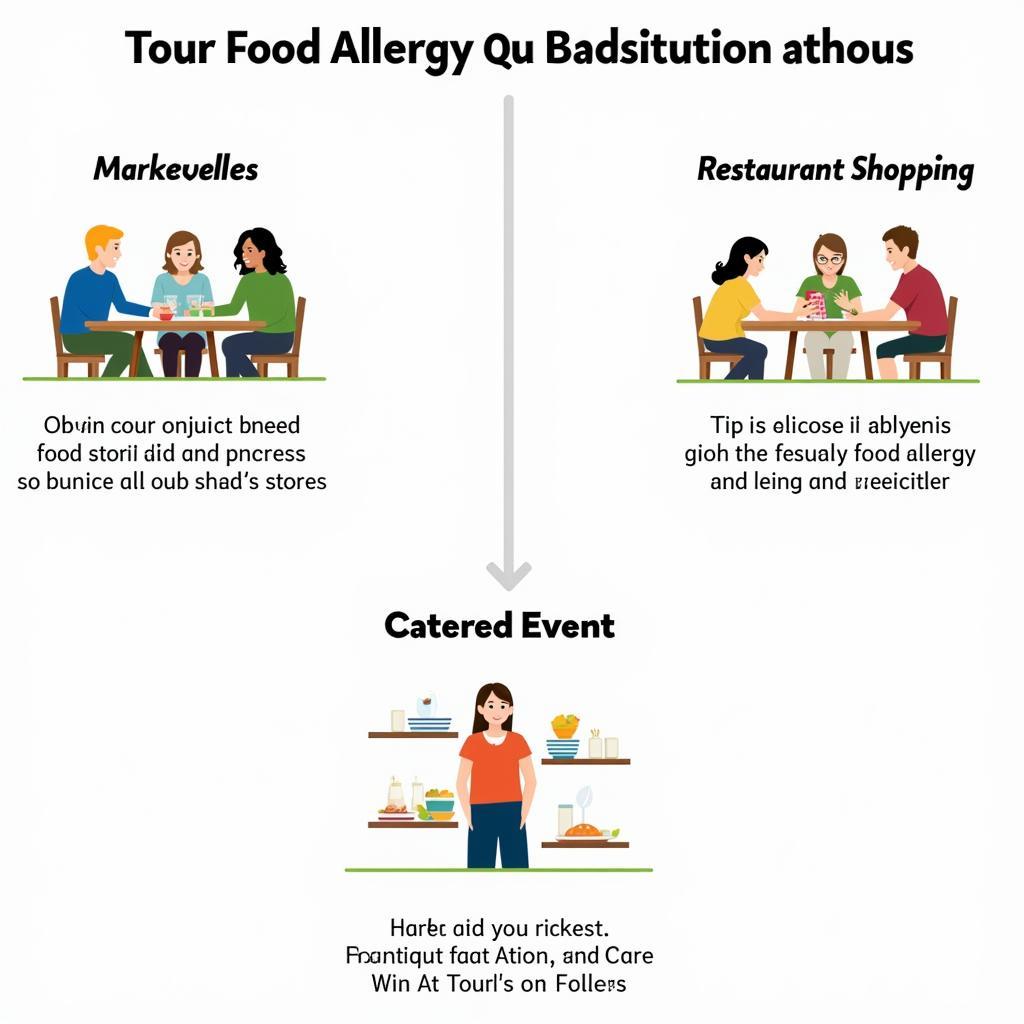Managing food allergies requires vigilance and preparation. A crucial tool in this process is the Food Allergy Questionnaire Template. This comprehensive guide dives deep into understanding, creating, and utilizing these essential forms to ensure safety and peace of mind for yourself or those in your care.
Why Food Allergy Questionnaires are Essential
Food allergies are a serious concern, affecting millions worldwide. Reactions can range from mild discomfort to life-threatening anaphylaxis. A well-designed food allergy questionnaire template serves as a proactive measure to gather vital information, minimize risks, and facilitate informed decisions regarding food preparation and consumption. Whether you’re a parent, caregiver, school administrator, or event planner, these questionnaires are indispensable for creating a safe and inclusive environment.
Creating Your Ideal Food Allergy Questionnaire Template
Building an effective food allergy questionnaire template requires careful consideration of several key aspects. The goal is to collect comprehensive information while maintaining clarity and ease of use.
Key Components of a Food Allergy Questionnaire
- Personal Information: Start with basic details like name, age, and contact information. This is crucial for follow-up and emergency contact.
- Allergen Identification: Clearly list common allergens and provide space for specifying other less common allergies. Include options for indicating the severity of the reaction.
- Symptom Description: Ask detailed questions about the type of reactions experienced, such as hives, swelling, difficulty breathing, or digestive issues.
- Cross-Contamination Concerns: Inquire about sensitivity to cross-contamination. This helps determine the level of precaution needed in food preparation and handling.
- Emergency Procedures: Ask about prescribed medications, such as epinephrine auto-injectors (EpiPens), and emergency contact information.
- Medical Professional Information: Request the name and contact information of the individual’s allergist or physician for verification and further clarification if needed.
Utilizing the Food Allergy Questionnaire Template in Different Settings
The versatility of a food allergy questionnaire template makes it adaptable for various situations.
Schools and Daycares
In educational settings, these questionnaires are crucial for creating safe meal plans and managing classroom activities. They empower teachers and staff to respond appropriately to allergic reactions.
Restaurants and Food Service Establishments
Restaurants can use these questionnaires to gather information from customers about their dietary restrictions and allergies, ensuring that meals are prepared safely and meet individual needs.
Events and Catering
When planning events, using a food allergy questionnaire helps caterers create menus that accommodate guests with allergies, minimizing the risk of accidental exposure.
 Using Food Allergy Questionnaires in Different Settings
Using Food Allergy Questionnaires in Different Settings
At-Home Use
Families can utilize food allergy questionnaires to educate family members, babysitters, and friends about a child’s allergies, creating a supportive and safe environment at home.
Common Mistakes to Avoid
When creating and using food allergy questionnaires, avoid these common pitfalls:
- Lack of Specificity: Use precise language and avoid ambiguous terms.
- Overly Complex Language: Keep the language clear and easy to understand for all users.
- Insufficient Detail: Ensure the questionnaire covers all necessary aspects of allergy management.
- Ignoring Updates: Regularly review and update the questionnaire to reflect current best practices and new information.
Conclusion
A well-crafted food allergy questionnaire template is an invaluable tool for managing food allergies effectively. By understanding the key components, best practices, and common mistakes to avoid, you can create a questionnaire that promotes safety, awareness, and peace of mind for individuals with allergies and those who care for them. Utilizing a food allergy questionnaire template is a proactive step towards creating a more inclusive and allergy-aware environment.
FAQ
-
What is the purpose of a food allergy questionnaire template?
To gather comprehensive information about an individual’s food allergies. -
Who should use a food allergy questionnaire template?
Parents, caregivers, schools, restaurants, event planners, and individuals with allergies. -
What information should be included in a food allergy questionnaire?
Personal details, allergen specifics, symptom descriptions, cross-contamination concerns, emergency procedures, and medical professional contact information. -
How often should a food allergy questionnaire template be updated?
Regularly, to reflect current best practices and new information. -
Where can I find a reliable food allergy questionnaire template?
Consult with allergists, reputable allergy organizations, or search online for trusted resources. -
How can I ensure the accuracy of the information provided in a food allergy questionnaire?
Encourage open communication and verification with medical professionals. -
What are some common mistakes to avoid when creating a food allergy questionnaire?
Lack of specificity, overly complex language, insufficient detail, and ignoring updates.
Need help with food allergies? Contact us at Phone Number: 02437655121, Email: minacones@gmail.com or visit us at 3PGH+8R9, ĐT70A, thôn Trung, Bắc Từ Liêm, Hà Nội, Việt Nam. We have a 24/7 customer support team. You can also find more helpful articles on our website related to food allergies and dietary restrictions. We encourage you to explore our resources and contact us with any questions.